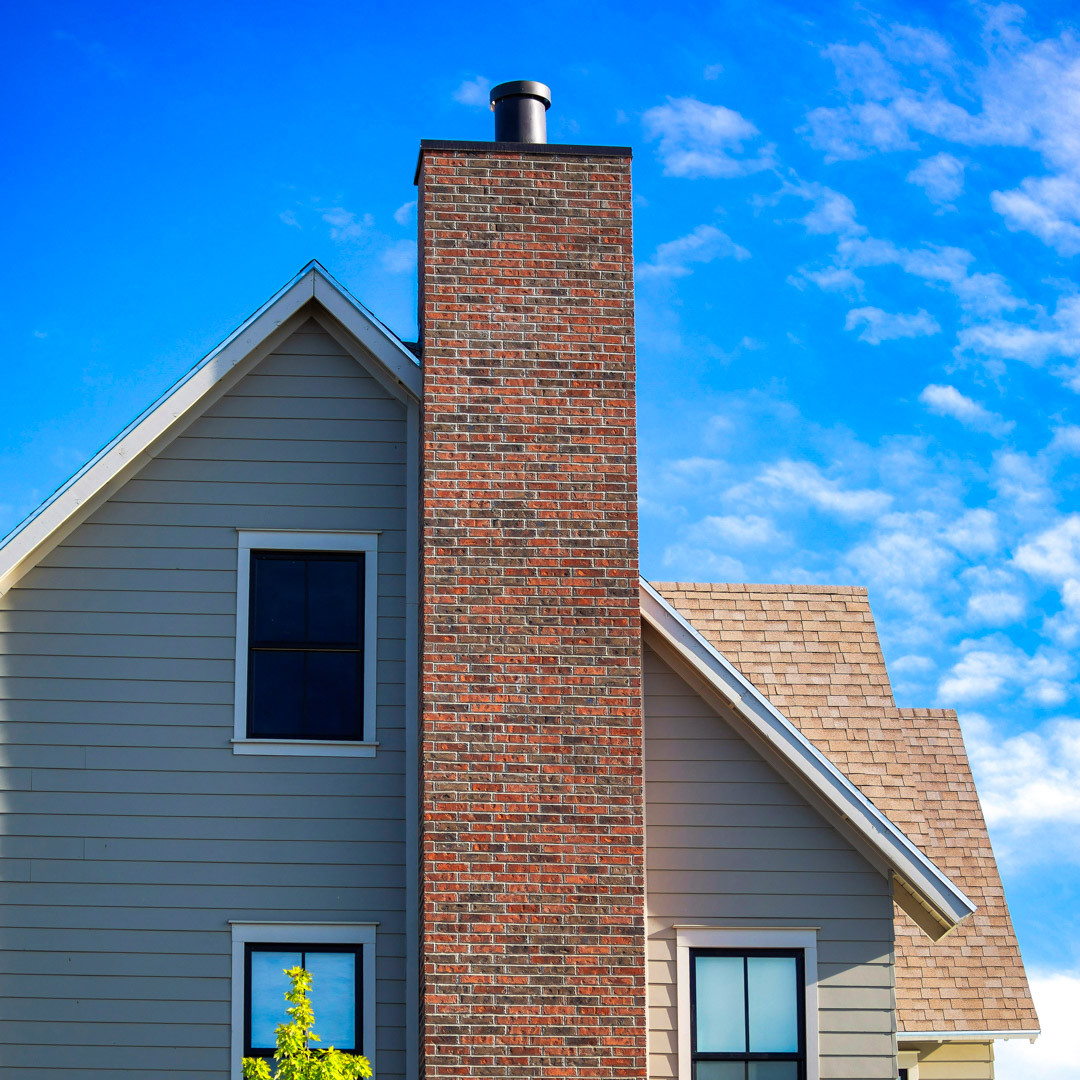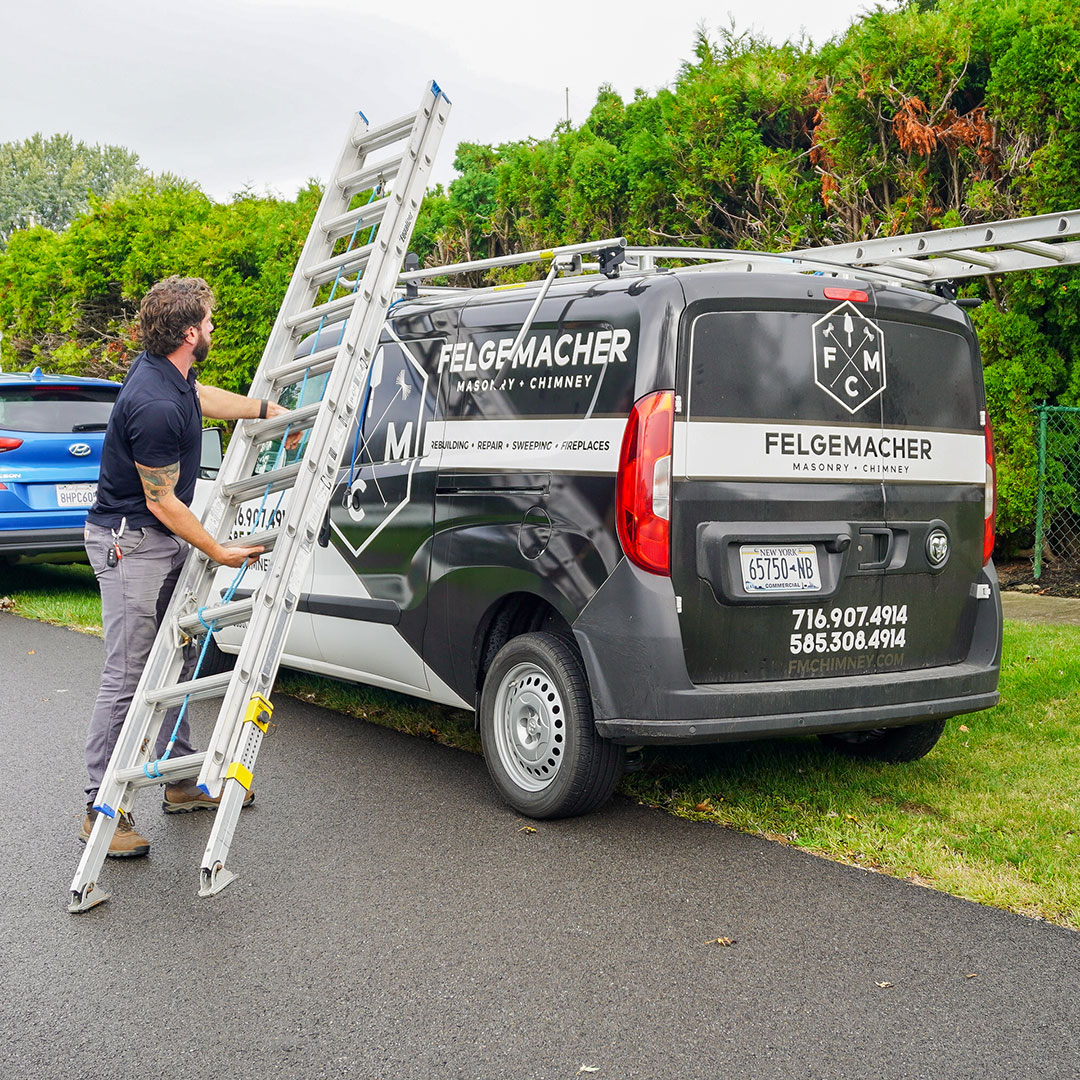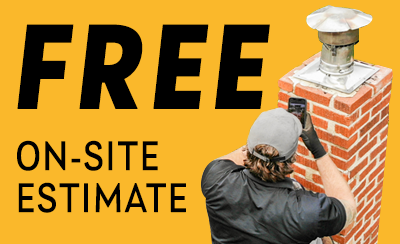Understanding Your Chimney
Since its inception around the Middle Ages, the masonry chimney has evolved significantly to enhance its efficiency in expelling smoke and gases, making it much safer to enjoy your modern wood-burning fireplace or stove. In addition to its brick-and-mortar facade, the chimney contains over a dozen components. This article will help you understand the anatomy of your chimney, connecting you to its rich history and ensuring you’re not left in the dark.
 The Guardians of the Chimney
The Guardians of the Chimney
- Chimney Cap: The chimney cap sits atop the chimney like an angel on a Christmas tree. It covers the exposed flue vent and features a mesh wire screen to protect the chimney from rain, snow, animals, and debris while expelling smoke and fumes.
- Chimney Crown: This sloped concrete slab features a slight overhang, known as a drip edge. It is the uppermost section of the chimney and deflects water away from the brick and mortar, preventing leaks and masonry damage.
The Smoke Highway
- Flue: The flue is the chimney’s highway – a vertical passageway that carries smoke and gases out of your home. The flue must remain clean and smooth as obstructions can block the venting of exhaust, causing it to back up into your home.
- Flue liner: Commonly made of clay tile, metal, or cast-in-place materials, the liner encases the flue to retain heat within the chimney for efficient venting and fire prevention. Cracks in the liner could transfer heat to combustible materials, such as the attic, roof, or basement, resulting in a house fire.
The Gatekeeper
- Chimney Thimble: This metal sleeve creates a safe passage for the flue liner to connect to the fireplace. It prevents hot gases from coming into contact with combustible materials.
- Throat: The narrowest point in the chimney, just above the firebox, the throat helps create a strong draft that draws smoke up the flue where it exits at the top of the stack.
- Damper: A metal plate above the firebox acts as an airflow regulator, allowing you to control the draft and heat when using the fireplace. Closing the damper when the fireplace is not in use prevents energy loss.
The Heart of the Hearth
- Firebox: This is the heart of the hearth, the chamber where the fire burns. It’s lined with heat-resistant materials like firebrick and refractory mortar to withstand the high temperatures of a fireplace, stove, or furnace.
- Ash Dump: A small, clean-out door below the firebox, the ash dump allows for the safe collection and removal of ashes.
The Heavyweight Champions
- Lintel: This fire-resistant beam runs horizontally across the entire length of the fireplace, supporting the chimney structure. In some homes, it is a brick or stone arch over the firebox.
- Foundation: The foundation is at the chimney’s base. A sturdy foundation is critical for supporting the weight of the entire chimney structure, which can be as much as two tons. Proper construction and routine maintenance ensure the stability of your chimney.
Now that you have a better understanding of your chimney, you can appreciate its primary role in keeping your home and family safe when using gas and wood-burning heating appliances. Regular maintenance, including annual inspections and cleaning by a CSIA-Certified Chimney Sweep®, ensures optimal performance and prevents potential hazards such as chimney fires and carbon monoxide poisoning.
 Call Felgemacher for Expert Chimney Repairs in Western New York
Call Felgemacher for Expert Chimney Repairs in Western New York
If you’re looking for top-notch chimney caps, crowns, covers, installations, and repairs in western New York, contact the certified experts at Felgemacher. Serving areas from Fairport to Woodlawn and everywhere between Greater Rochester and Buffalo, our team is dedicated to ensuring your chimney and fireplace operate at their best. For a chimney repair estimate, visit us online at .



